Due to the corona situation, the board meetings in 2020 were held by video conference. A special highlight was the virtual toast to a Happy New Year 2021.

Due to the corona situation, the board meetings in 2020 were held by video conference. A special highlight was the virtual toast to a Happy New Year 2021.

Captain iTR and master tailor Walter Pitlik was honored by HIRH Karl von Habsburg for his many years of activity in the creation and preservation of historical uniforms. The President of the UEHMG Major General iTR Michael Blaha and Adjutant General Peter Pritz insisted on handing over the certificate personally and expressed thanks and appreciation to Walter Pitlik.
Due to the Corona pandemic the cavalry scene of the Dragoon Regiment No. 3 has crowded together on schedule in the quarantine-free time. But the main annual program could still be carried out.
At the end of August the annual horse festival took place in the castle Schlosshof and we were once again able to present an opening performance in front of an enthusiastic audience for the 30th time as a tradition.



On 5th and 6th September the preparation course for the 27th Marchfeld Castle Ride took place in the riding hall and in the grounds of the former riding and driving instructor institute Schlosshof. The course included, among other things, overcoming original natural obstacles, water-shy horses learned to drive through, hand horse rides, crossing a wooden bridge, saber exercises, “Kranzelstechen” and much more.
The successfully completed course of the 14 participants had a positive effect in the subsequent competition from September 17th to 20th, with 1st and 2nd place in the main competition (A).

Corona made it possible that after 26 years, due to the postponement of the 1st date, the 27th castle ride, under the honorary protection of Dr. Werner Fasslabend, could take place in autumn (September 17th to 20th). The fantastic autumn weather ensured a positive atmosphere and harmony between horse and rider among the more than 40 participants.
The opening took place in the open air in front of the Salaterena, as always with a champagne reception. In the course of this, Olt. Mag. Martin Planko was promoted to Rittmeister by the regiment commander Colonel of the cavalry Hans Günter Ebetshuberfor for special services to the Dragoon Regiment No. 3. After two successful days (competition A – approx. 80 km and competition B approx. 50 km) and mastering the various tasks, the traditional gala dinner and the award ceremony took place on Saturday in the “Restaurant zum weißen Pfau”, of course considering the corona rules.
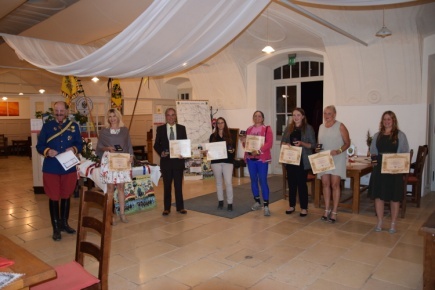
The cavalry performance badge for orientation and trail riding as part of competition A, which is also sponsored by NOEPS, was achieved by the following participants:

The trophy of honor donated by the House of Habsburg achieved for this year (military rating):
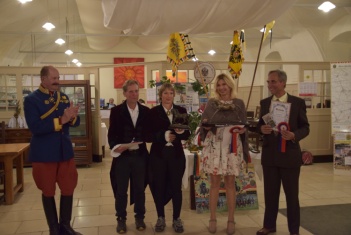



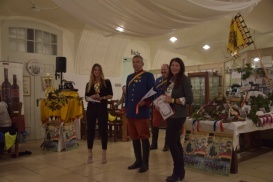


The farewell to the horse of the commandant Hans Günter Ebetshuber after 20 years of loyalty and solidarity touched us emotionally.
AKORD
*25.3.1996 – †13.10.2020
One last look back … His last horse festival
20 years at the head of the DR 3 at the opening of the horse festivals in the castle Schlosshof.
Thank you for the wonderful hours, your loyalty and camaraderie.

With great dismay and sadness we have the duty to announce that our long-time comrade Alt Major Ton Gubbels from the Frei-Hussars von Glasenapp fell asleep surprisingly and peacefully with his family on December 9th, 2020 and passed away.
The President of the Union of European Historical Military Groups, Major General iTR Michael Blaha, the Board, the Presidium and all comrades of the UEHMG express their deep sympathy to the bereaved for this heavy loss.
The UEHMG will keep an honorable memory of its well-deserved functionary.
The Association “Traditia Militara” (ATM) from Romania has climbed the Carpathian mountains twice this year, in order to reach the Hero’s Cross. This monument, nominated in the Guinness Book of Records for being the highest metal monument at the highest altitude, was raised with huge efforts in 1928, to honor all those who sacrificed their lives in World War I.
The inauguration day was chosen on the Christian celebration of the Elevation of the Holy Cross: September 14. This is why the first expedition this year was on September 14, 2020 – the path led by the Carpathian Sphynx.
The second march was made on November 30, 2020, on St.Andrew’s day, for the re-consecration of the Hero’s Cross, after its restoration. The winter march, in full campaign gear of the Romanian Army of World War I was very evocative for those who more than a hundred years before had participated in the Great War. Temperatures were below – 15°C. Mountain troops from all over Romania represented their units at the military and religious ceremony, attended by the Minister for Defense, the Secretary General of the General Staff of the Romanian Army and the Metropolitan Archbishop delegated by the Patriarch. The members of Traditia Militara, as they do every year after the official ceremony, have commemorated also their fallen former enemies, by singing “Der Gute Kamerad” and saying a prayer in Hungarian. The highest authorities present commended the reenactors for their very good performance.

With great sadness we received the news of the passing of our esteemed patron S.E. Max Turnauer. On November 7th, 2020, at the age of 90, a person who shaped beyond the borders of Austria was called home to eternity with the consolations of the Holy Church.
We lose in S.E. Max Turnauer a person who has been committed to Christian values and a pro-European attitude throughout his life. Right up until the end he was interested in the economic development of his company, family, friends and politics. S.E. Max Turnauer was also the ambassador of the Sovereign Knight of Malta in the Principality of Liechtenstein and its permanent observer at UNIDO, Knight of the Order of the Golden Fleece, Knight of Honor of the Order of St. George, Honorary Senator of IMATEC University, Honorary Citizen of the Heldenberg community and bearer of numerous domestic and international foreign decorations.
S.E. Max Turnauer, born on February 17, 1931, came from a Prague industrial family who, after being expelled and expropriated after World War II, were able to build one of the most important Austrian industrial enterprises. The industrial empire comprised around 40 plants at home and abroad, whose successor companies still occupy an important position in the Austrian industrial landscape. Until recently he was also Honorary President of Constantia Industries AG, which is owned by his son Stanislaus.
As a patron of the UEHMG, S.E. Max Turnauer made his Wetzdorf Castle available to the UEHMG for many years as the seat of the association – we look back with great gratitude on this opportunity of pride.
The UEHMG will keep an honorable memory of its deceased patron in gratitude and memory.
On November 7th, the Deutschmeisterbund under the leadership of its President Lieutenant Colonel Andreas Tarbuk held the commemoration of the dead 2020 in a small but dignified setting at the Deutschmeisterdenkmal – considering the current official Corona rules. The President of the UEWHG, Major General iTR Michael Blaha, took part in the wreath-laying ceremony on the Deutschmeisterplatz, as did representatives of the resident Deutschmeister clubs.
In view of the tragic attack in Vienna in the recent past, the speeches also commemorated these victims in particular, but also all those who died from the Deutschmeister environment. Major General iTR Michael Blaha pointed out the importance of maintaining tradition as a keeper of positive values of the past as a contribution to the creation of a secure present.
Military Dean Episcopal Vicar Colonel MMag. DDr. Alexander Wessely finally said a common prayer with all participants before the delegation made their way to the Central Cemetery to hold a memorial for deceased comrades there too.
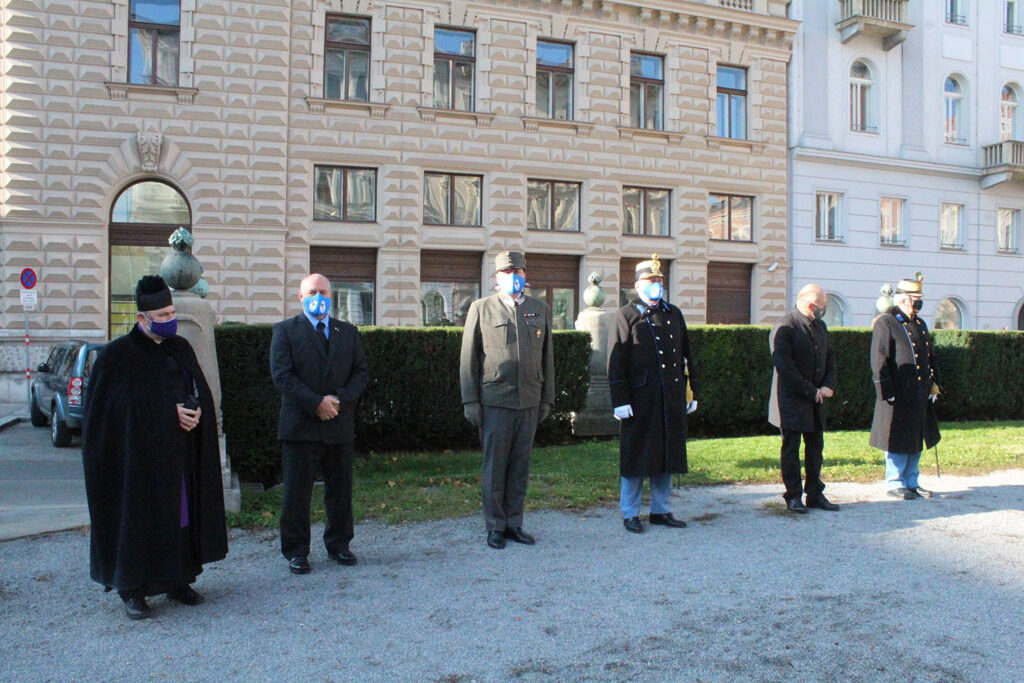


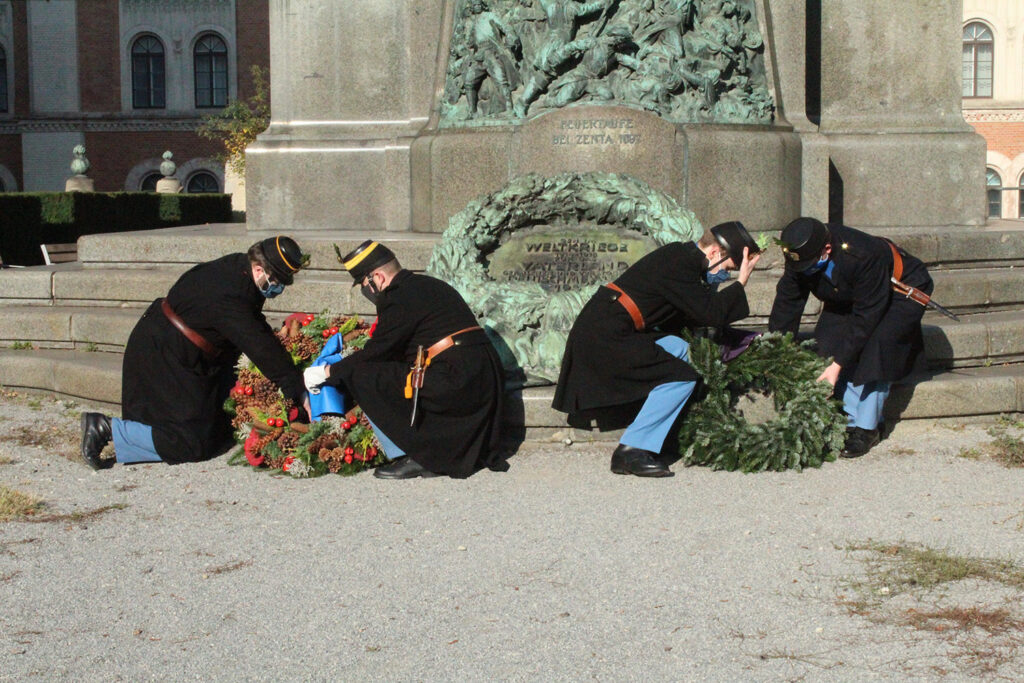







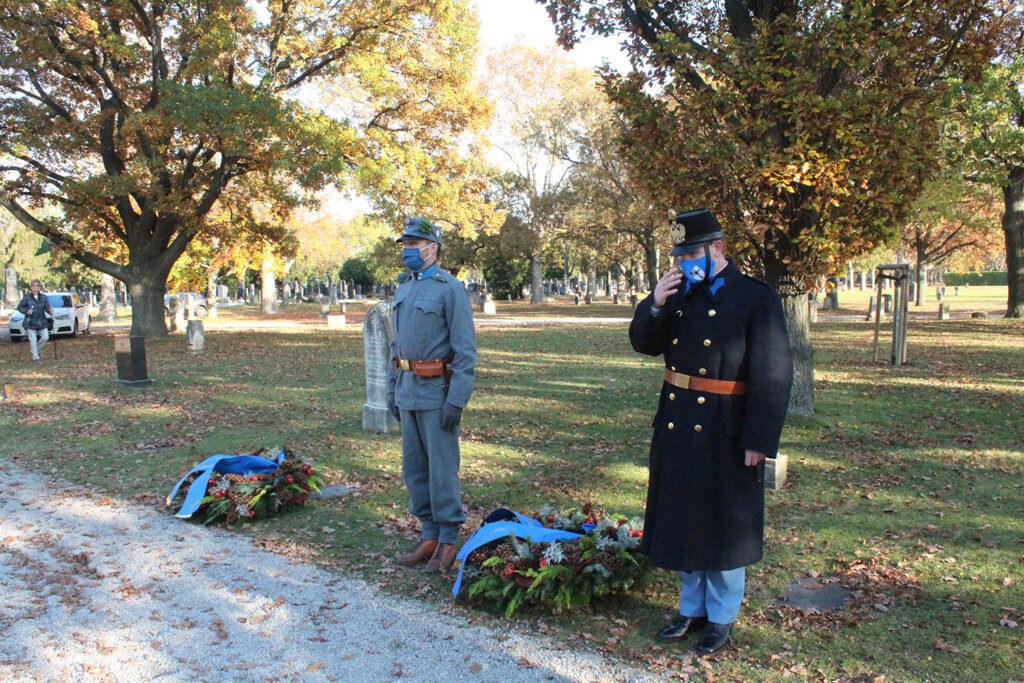












On Sunday, October 25th, 2020, at the invitation of the church rector DDr. Reinhard Knittel of the St. Pölten Prandtauerkirche the deposit of a relic of the Blessed Emperor Karl I of Austria was held. The event was conducted in compliance with all applicable corona rules under the organizational leadership of Major General iTR Michael Blaha, MSc, President of the UEHMG, carried out on a smaller scale.
On part of the maintaining tradition The Radetzky Hussar Regiment No. 5 under the leadership of Colonel of Cavalry KR Ernst Kugler, the Radetzky Order under the leadership of Grand Master KR DKfm. Harry Tomek and the Order of St. George under the leadership of Vice Chancellor Dr. Peter Harold were represented.
HIRH Karl von Habsburg, as head of the House of Habsburg, personally attended the salemn mass which was conducted by the military bishop Dr. Werner Freistetter and carried the relic into the specially set up Kaiser Karl chapel.
With an atmospheric agape in the sacristy – unfortunately only on a very small scale due to the current Corona measures – the relic deposit came to a worthy end.












On 7th March 2020 the “Great Siberian Ice March” took place. A daring marching group crossed the frozen Lake Baikal in Siberia.
With more than 25 million years of age, Lake Baikal is the oldest and, at 1642 metres, the deepest lake on earth and the most important freshwater reservoir on earth. In terms of area, it is as large as Belgium, with a length of 673 km and a width of 82 km. Temperatures of around minus 40 °C cause the lake to freeze completely for several months. The 2 to 3 metre thick layer of ice not only supports normal road traffic, it is also navigable for heavy battle tanks.
On February 28th 1920, the last returnees of World War I crossed Lake Baikal by foot on their way to freedom. Among them were also many Czechs, who had been taken by the k.u.k. Army to Russia. For the 100th anniversary of this crossing, volunteers were searched who wanted to imitate this march across the lake.
On March 4th at 04:00 o’clock in the morning the plane of the Czech government took off from Prague, which carried 80 expedition members free of charge to Krasnoyarsk in Siberia. 8 hours of time change illustrate the distance travelled. After landing in Krasnoyarsk, the city was visited. During the next night, the Trans-Siberian Railway took the expedition to Tajset in an 8 hour journey.
On March 5, Tajset was visited and a wreath was laid on the site of the former gulag. During the second night in Siberia, the Trans-Siberian Railway covered the distance to Irkutsk in an 11-hour journey. Irkutsk is one of the most beautiful cities in Siberia, the city and some monuments could be visited. The evening of March 6th was spent by the expedition group on the banks of Lake Baikal. Preparations for the march the next day were made.
On March 7th the march across the frozen Lake Baikal started at 0400 o’clock in the morning. As the only Austrian in this memorable expedition the IR84 sent his First Sergeant. Good winter clothing was necessary for the march, the temperatures in Siberia are a little different than in Europe. To be able to cross the mirror-smooth ice spikes had to be mounted on the shoes.
Right at the start there was a storm with up to 120 km/h wind speeds, which made the temperature feel like minus 70°C. The snow came along horizontally, fallen objects disappeared in the darkness of the night even before they had fallen to the ground. However, the march was started, ski goggles protect the eyes from the storm.
After about an hour the storm stopped and the rest of the day was absolutely calm. A magnificent sunrise rewarded the brave marchers. Even in the Siberian ice desert, the sun can shine so strongly that uncovered skin can get sunburnt. The incomparable scenery of the frozen lake and the special nature of this adventure was the greatest reward for all march participants. Around midnight the marchers reached the southern shore of the largest lake on earth and looked forward to a few drinks in the hotel.
The last day of the expedition was spent in Ulan- Ude, also in this town there are some sightseeings.
Back to Prague the government plane of the Czech Republic brought us again in a special flight. In Novosibirsk a stopover was necessary to refuel. After a flight of 10 hours the clocks were set back 2 hours, because we had flown through 8 time zones again. So we arrived 2 hours after our departure at the Mongolian border in Central Europe.








Paneuropa, the Order of St. George and the UEHMG – in the following jointly reffered to as the “Editor” – conducted a detailed interview on 3rd March 2020 with Dr. Christian Ortner, the director of the Museum of Military History, about the current situation around the museum.
Editor: The Museum of Military History (HGM) is certainly a unique museum. What is so special about it?
Christian Ortner: The Museum of Military History is not only the oldest real museum building in Vienna, it is also impressive in its overall concept, because in this institution, architecture, content and museum significance merge into one unique greatness. Its significance is not limited to present-day Austria, but has a strong Central European, perhaps even European dimension.
Editor: The museum has a special genesis. What was the original mission?
Christian Ortner: The museum itself owes its origins to an elementary event, namely the social and national revolutions of 1848/49. After they were defeated or stopped, it was decided within the military leadership to erect three large barracks buildings in the greater Vienna area as so-called defensive barracks in order to be able to control the city in the event of renewed unrest – in other words, a clear anti-revolutionary, perhaps even anti-democratic significance. These include today’s official building in Rossau, the Arsenal barracks and the third barracks no longer exist today; these were built “am Hof”. These three barracks form a triangle with which “the city could always be kept under control”. The emperor himself also ordered a cultural building for the Arsenal, which was to house the imperial weapons collection at the time. This resulted in the so-called k.k. Court Weapons Museum. Today’s HGM was first opened as a weapons museum in 1869, naturally on a smaller scale. In the years that followed, however, some of the collections were transferred to what is now the court and hunting chambers, and armoury, in other words to the Kunsthistorisches Museum (art-history museum). Now a new concept had to be found, which was especially promoted by Crown Prince Rudolf, and now envisioned the creation of a historical military museum. That was revolutionary at the time. This makes the Museum of Military History the oldest historical military museum in the world. It was then opened again in 1891 as k.(u.)k. Military Museum. After the end of the monarchy in 1918/1919 initiatives were taken to close the entire museum as a symbol of the k.u.k. militarism or monarchism, or even to tear it down or sell it in its entirety, i.e. collections and buildings, to the USA. Ultimately, however, it was the veterans of the First World War, among others, who asked the question of who would then tell their own story. In the end, these considerations prevailed.

Dr. Christian Ortner took over the management of the house in 2005, initially on an interim basis, and then finally in 2007. From around 58,000 to 60,000 visitors at that time, the HGM has now increased to around 287,000, and the income has quadrupled.
Editor: What is the museum’s mission today?
Christian Ortner: Today’s mission of the museum is to present Austrian military history from the end of the 16th century to the present day, in a geographically and historically broader context, in line with military technology, social and societal developments and political history. This means that military history is not merely the history of operations, but is embedded in a general historical strand. But Austrian military history functions as the “red thread” throughout the presentation.

Editor: When you hear critics, you get the impression that for them such a museum no longer fits into the present day because it supposedly glorifies war or weapons. Yet you have given a fairly clear answer to this accusation with the slogan “Wars belong in museums”.
Christian Ortner: We must not forget that military historical museums or army museums always polarise. Especially in German-speaking countries. It is simply a question of how a society deals with “armed power”, both in the present and in history. Accordingly, everyone will approach this subject from the perspective of their own personal history. It is precisely for this reason that I believe that one should not exclude the museum presentation of military history. On the contrary. Even if the subject matter is polarised, of course, military history has an important function. In modern society, it is precisely during phases of a long period of peace that people forget that it often came about as a result of war or military developments. Of course, the Museum of Military History cannot replace good history lessons, but it can accompany and support the understanding of one’s own history.
Editor: In a cultural programme of the ORF (Austrian Broadcasting Corporation) it was pointed out in the introduction, almost accusingly, that the Habsburg rulers and their military commanders still stand here. What would remain of the HGM if this time were to be left out?
Christian Ortner: The HGM currently presents military history from the end of the 16th century to 1991, the history of the Armed Forces of the Second Republic is shown in the special exhibition pavilion. If one were to exclude the history of the monarchy, it would mean leaving out almost 350 years; de facto, this would mean that around three quarters of the museum would no longer exist.
Editor: That would mean sweeping a part of Austria’s history under the carpet.
Christian Ortner: We must not forget that it is a total representation of almost five centuries, the history of the republic covers about 100 years.
Editor: You yourself are a historian. As an observer interested in history today, one often has the impression that a strong direction in the science of history tends to interpret and evaluate everything historical from today’s perspective. Is something like that permissible?
Christian Ortner: That is a popular approach to history. This is also because there is a tendency to emphasise those elements of history that offer themselves as the historical foundation for one’s own world view, one’s own understanding of culture, perhaps even one’s own ideology. From this, then, little useful evaluations or judgments based on contemporary values arise. In order to prevent this, serious historical science makes use of contemporary comparison. This means that protagonists and events are placed and compared in an international contemporary context. In this way an assessment “from that period ” becomes possible. For example, if one approaches the person of a Chief of General Staff, one will not be able to compare him with a current Chief of General Staff, but must compare him with his European counterparts of that time. Only then is it possible to determine whether he was a particularly martial or a peaceful general.
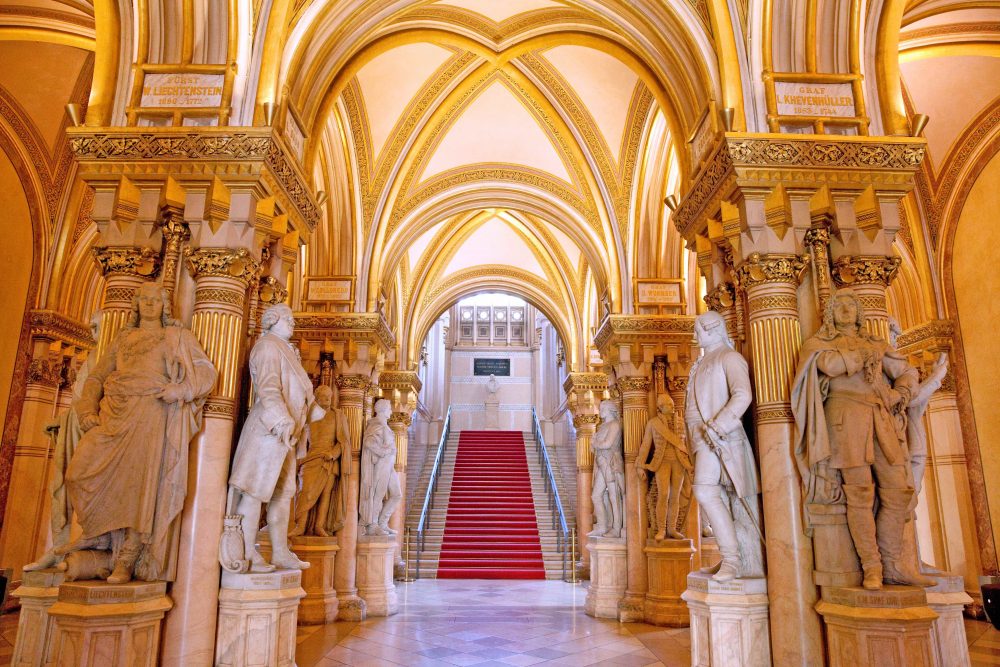
In a cultural programme of the Austrian Broadcasting Corporation (ORF), it was pointed out in the introduction, in an almost accusing manner, that the Habsburg rulers and their military commanders still stand here. If the history of the Monarchy were to be left out, it would mean excluding almost 350 years, de facto meaning that around three quarters of the museum would no longer exist.
Editor: That would also mean that historical studies would become a political tendency and thus also manipulable.
Christian Ortner: I believe the historical truth is revealed when one manages to consider as many perspectives as possible. That is sometimes difficult and, of course, also time-consuming. Sometimes we are tempted, because of simplicity or because it fits into our own concept, to take only one perspective. I think this is very problematic, because the history student learns this already in his first introductory lecture at the university: a lot of abuse can be made with dubious historical science.
Editor: That is, after all, one of the accusations made against this House. The critics then say: yes, there is an exhibition, and weapons are on display and it is not shown what these weapons were used for. Do you really have to present everything to museum visitors today in explained tidbits, or should they not be able to evaluate a museum and its history?
Christian Ortner: I think that the classical museum visitor should not be portrayed as a fool. As a rule, visitors are very reflective, especially adults. With young people, of course, the challenge is different. However, they almost always come in company, usually in school groups. They are then usually accompanied by in-house cultural mediators and familiarised with the historical context. Here, too, we find that the young people are very much involved and also actively participate in the individual educational programmes.
Editor: And of course there is the accusation that in such a museum not only tanks are shown, but also pictures glorifying war, sometimes devotional objects from a totalitarian time, although there are very strict laws in Austria. Has the HGM ever violated laws here?
Christian Ortner: No, the Museum of Military History, as a department of the Federal Ministry of Defence, is of course exempt from certain legal requirements, especially with regard to war material and weapons. On the other hand, I don’t believe that it makes much sense to ban symbols that stand for totalitarian systems from the exhibition altogether. I think it makes more sense to show them in the museum as witnesses of the past than to find them as graffiti sprayed on a wall somewhere or on a Jewish gravestone.
Editor: There were also exhibitions where various dealers offered their goods, where again the accusation was made that they sold such symbols. How do you proceed with such things?
Christian Ortner: It concerns one single event where we also admitted flea market traders to increase income. All stand operators were required to comply with all legal requirements regarding the Weapons Act, the War Material Ordinance and the regulations regarding the handling of objects from the National Socialist era. They also gave a contractual assurance of this. We checked this several times during inspections. The executive was also on site and carried out checks. There was not a single violation of any of these regulations.
Editor: That would probably have caused a huge stir.
Christian Ortner: Of course. We have strictly instructed all stand operators to comply with these regulations and have also checked this. Whether someone is selling something underhand cannot be checked, but there was not a single reported violation of any of the legal regulations.
Editor: Is there anything in the exhibitions that documents resistance, especially against National Socialism?
Christian Ortner: Of course. In the hall “Republic and Dictatorship”, which covers the period from 1918 to 1945, we have a separate area with the topic “Resistance”. It is primarily concerned with those Austrians who, for example, were deployed with the Yugoslav Tito Partisans or served in Allied armies, such as the members of the little-known Austrian battalion of the French army. So the field of resistance, especially military resistance – we are also a museum of military history – is very prominently represented.
Editor: You have been the director for 15 years. How has the museum developed during that time?
Christian Ortner: I took over the management of the house in 2005, initially on an interim basis, and then definitely in 2007. At that time, the house was in a serious crisis, as the annual number of visitors was rapidly decreasing, and so was the corresponding income. The department’s instructions to my management were then very clear: to bring the museum back up to the level of a federal museum. And we actually succeeded in doing so. From around 58,000 to 60,000 visitors, we have now increased to around 287,000, and we have quadrupled our income, which means that we have once again arrived within the Viennese museum landscape. In addition, during this phase appropriate changes were made in the building itself. With the increase in income, larger projects were then also possible. The renovation and redesign of individual rooms was tackled. For example, the hall of the First World War was completely redesigned, and adaptation work was also carried out in other halls, especially with regard to conservation, inscriptions and lighting. The problem of the Panzer Garden was also solved. At that time the combat vehicles were not protected from the weather outside. We were now able to transfer all the vehicles into a hall. We also solved the problem of presenting the history of the Armed Forces of the Second Republic through a creative action – in which we built an exhibition pavilion. A lot has happened, but there is still more work to be done in the halls.

Editor: Another special feature of this museum is that it belongs to the military, the Ministry of Defence. Which is also criticized by some people who think that the HGM belongs in a kind of museum holding. What would change if the Ministry of Defence were no longer the owner?
Christian Ortner: The idea of finding another legal entity for the museum, either through a change of department or through “privatisation”, has already been examined very closely at the beginning of this millennium. It was found that, on the one hand, there were legal problems – provisions such as the Weapons Act or the War Materials Ordinance – and, on the other hand, that relying on the logistic systems of the Austrian military would be dropped. If all the services provided by the military had to be bought in, the museum would no longer be solvent after one or two quarters. Of course, we are very much dependent on the infrastructure of the Austrian military, for example for the storage, repair and restoration of large equipment. The museum would partially collapse without the military support. These services, which the Austrian army provides to the museum free of charge, are worth a six-figure sum in pecuniary terms, and in some cases even a seven-figure sum. In return, the HGM provides important representation and educational services for the armed forces and contributes to the historical self-image of the Federal Army. These are also the reasons why, by international standards, all state army museums – with one exception – are under the control of the ministries of defence.
Editor: In connection with the above-mentioned accusations that a platform for so-called right-wing forces was offered here, the personnel policy was also criticised. Asked directly, do you have problematic people in the museum?
Christian Ortner: No, all employees of the Army History Museum are employees of the Ministry of Defence. They are immediately subjected to a reliability check when they enter the museum. This means that the area of extremism is also checked. Among the approximately 80 employees of the HGM, there are more than 20 with university degrees. If one or the other has joined a student fraternity during his or her student days, or has joined a political faction within the Austrian National Union of Students, this is due to time and age. However, you will not find any political articulation by my staff within the framework of the House. Accordingly, I regard this accusation as absurd and grotesque.
Editor: Would it be possible for an employee of the HGM to become involved with a party?
Christian Ortner: Every employee has of course his active and passive rights as a citizen.
Editor: Another accusation is that the exhibits shown here are operational. In the evidence room, for example, care is also taken to ensure that the weapons on display there are still fully operational. Is it necessary for a museum that the exhibits are operational?
Christian Ortner: The question is which philosophy is followed. I think that museum pieces should be preserved authentically, i.e. unchanged in their original condition. So weapons are functional, because it is also a question of documenting technical development. A second point concerns the vehicles in particular. Anyone who owns a classic car at home will know that a certain amount of equipment must be left in the vehicle to prevent corrosion of the technical parts. The idea that here in the HGM tanks would be fully refuelled and ready for operation is of course not correct: the batteries and the breeches of the weapons are removed. In order to put these vehicles into operation, numerous specialists are required, and numerous safety precautions must be observed. The advantage of partial operability also lies in the fact that combat vehicles can be moved independently. If, to take an example, you want to move a recovery tank with its 60 tons by three meters, it is of course extremely costly to do this with a transport or towing device.
Editor: It has often been mentioned in the media that individual exhibition objects are not critically enough pointed out what they mean and where they were once placed. Is it the task of a museum to transport this criticism?
Christian Ortner: Particularly in military museums, every visitor goes to an exhibition with his or her own history, usually for family reasons. That means that the level of knowledge is divergent. We cannot replace good history lessons, nor can we replace the study of relevant specialist literature. The crucial thing is that we do not necessarily always have to contextualise the objects with texts, but also by putting them together in ensembles. It is an often-discussed museum-philosophical approach, how the relationship of text to object should be. There are exhibitions that consist only of text without original objects, others only of original objects. If you put together groups of objects, for example in a mock battlefield, in which you represent the two opponents, then a context already emerges.
Editor: One gets classified quite quickly by the reports: that one is a monarchist or a rightist when one goes to the museum. That bothers me personally. I don’t like being pigeonholed when I go to a museum. I have also never experienced when I go to the Natural History Museum that someone says I am following the attitude of the Stone Age people. Are there any approaches to counteract this image?
Christian Ortner: It’s relatively easy to counteract this image. Firstly, there is already the inscription on the outside wall that says “Wars belong in the museum”. This clearly indicates the pacifist attitude of the museum. The second point is the number of youth and school groups we can welcome each year. Of the approximately 2,600 guided tours, around 1,700 are school groups. It is presumptuous to put them all into a politically right context. We also have around two thirds foreign visitors. So we have correspondingly different perspectives. I would be very careful to assign these visitors to a politically extreme camp, whether right-wing or left-wing. They are simply interested people. If I’m not interested in animals, I won’t visit a zoo; if I’m interested in military history, I’ll go to a museum of military history without having to be considered an extremist.
Editor: There are events where you can participate as an outsider. I call “Montur und Pulverdampf” (equipment and gunpowder steam), where the traditional associations are very much involved. Now one could also take the view that a certain time is glorified because it is portrayed, even with a camp life. Is that something where one thinks about changing something?
Christian Ortner: No. I think this is an important event. On the one hand, there has been a massive demand from visitors to see uniforms, equipment or even the historical weapons “in action” or even to touch them. That is not the case with museum objects. We make sure that the quality of the presentations is also very authentic. Not everyone who wears a historical uniform can participate here. The groups are carefully selected and precisely checked for authenticity. To already see the depiction of a camp life as its glorification is, in my opinion, completely exaggerated and absurd. Even if it is only a weekend, the actors do not live luxuriously in their camps, especially not when it is wet and cold.
Editor: Thank you very much for the interview.
> Link to the interview on the website of Paneuropa
Copyright images: HGM by Nadja Meister